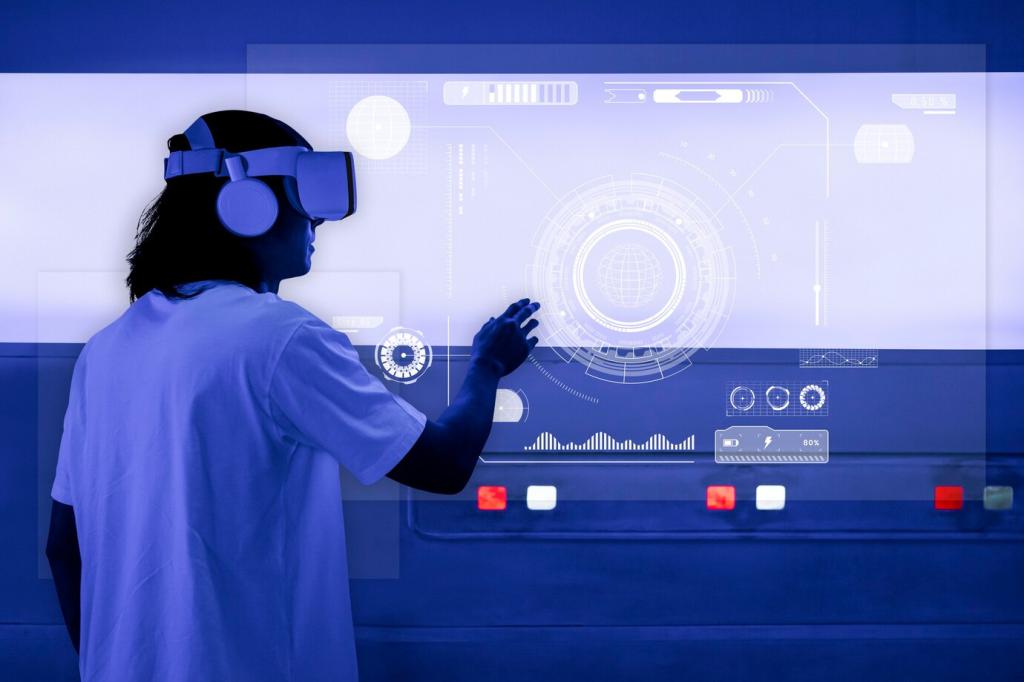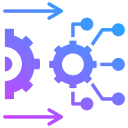The landscape of home living is undergoing a profound transformation in 2024 as smart technology solutions redefine how people interact with their living spaces. From intelligent automation to seamless connectivity, homes today are evolving into dynamic hubs of comfort, efficiency, and security. This page explores the most innovative technologies shaping home living, showing how modern advancements empower homeowners to realize new levels of convenience, sustainability, and customization.

Intelligent Climate Control
Modern smart thermostats and environmental sensors work together to deliver unrivaled comfort and savings. Gone are the days of manual adjustments and energy waste—AI-driven systems learn personal preferences, detect occupancy, and respond to external weather, ensuring that every corner of your home is always at the ideal temperature. Integration with window shades, fans, and air purifiers takes indoor air quality and climate comfort to the next level. These advancements represent a leap towards homes that are not only more comfortable but also significantly reduce carbon footprints through precise, automated management of energy consumption.
Automated Lighting Systems
Smart lighting today does far more than switch bulbs on and off remotely. Advanced systems dynamically adjust brightness and color temperature based on time of day, activity, or mood—enhancing well-being and energy efficiency. Integrated with voice assistants and motion sensors, lighting adapts instantly as people move through rooms, creating an intuitive environment that responds to their presence. These systems can even mimic natural daylight cycles, which supports better sleep patterns and productivity. The end result is an atmosphere that effortlessly complements lifestyles while optimizing every watt.
Unified Device Integration
A hallmark of 2024 smart homes is the seamless unification of countless devices under a single intelligent interface. Central control hubs and voice assistants can now orchestrate everything from entertainment systems to security cameras and kitchen appliances. Open ecosystem compatibility ensures devices from different brands work together flawlessly, offering a truly unified user experience. This degree of integration simplifies routines, eliminates technological friction, and unlocks unprecedented possibilities for automation and personalization in every area of the home.
AI-Powered Surveillance
Gone are the days of grainy footage and basic motion detection. Today’s home security cameras employ artificial intelligence to distinguish between people, animals, and vehicles—drastically reducing false alarms and providing only relevant alerts. Facial recognition technology allows trusted friends and family to be identified instantly, while advanced analytics enable real-time threat assessment. When an event occurs, high-resolution video is transmitted instantly to smartphones, giving homeowners confidence and control whether at home or away.
Smart Access Control
Modern access control goes beyond keys and codes, embracing biometrics, wireless connectivity, and cloud management. Smart locks now recognize fingerprints, voice patterns, or smartphone proximity to grant secure, personalized entry to residents and guests. Temporary digital keys can be issued for deliveries or service providers, with full control over access duration and permissions. Logs and notifications ensure homeowners are always aware of who enters and exits, supporting both convenience and robust security in daily life.
Comprehensive Environmental Monitoring
Security today expands to safeguarding homes against environmental dangers. IoT sensors now provide 24/7 monitoring for smoke, carbon monoxide, water leaks, and even air quality threats. These systems not only alert occupants via mobile devices, but can also trigger actions like shutting off water in the event of a leak or activating air filtration if pollutants are detected. By integrating environmental monitoring with overall smart home systems, homeowners can respond instantly to dangers, preventing costly damage and ensuring a safer, healthier living environment for all.
Whole-home energy management platforms analyze consumption patterns in real time, providing actionable insights and automated recommendations to conserve energy. These systems can prioritize appliance usage, shift loads to off-peak hours, and turn off idle devices automatically. By connecting to local utility grids, homes can also participate in demand response programs, further lowering costs and supporting broader grid reliability. Such technologies empower residents to take control of their usage, significantly minimizing waste and utility expenses.

